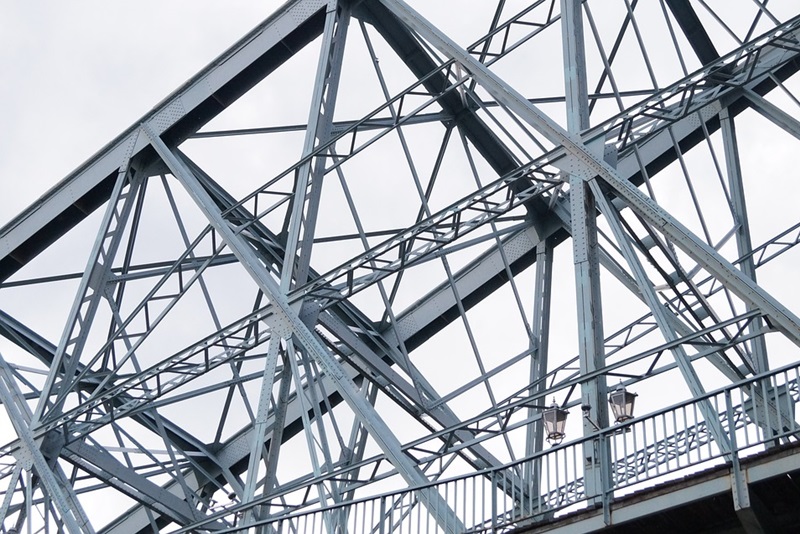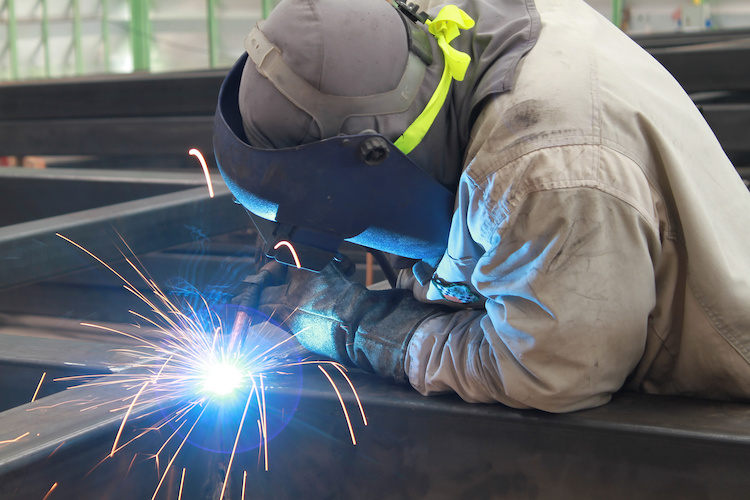Comprehensive Steel Fixing Solutions for Construction Projects
Comprehensive Steel Fixing Solutions for Construction Projects
Blog Article
Comprehensive Evaluation of Cutting-Edge Techniques in Steel Manufacture Industry
As the steel construction industry remains to advance, the assimilation of innovative techniques has actually ended up being important for staying affordable and fulfilling the demands of modern manufacturing standards. From laser reducing innovations to the application of robotics and 3D printing in steel production, the landscape of construction methods is rapidly changing. With each innovation bringing its own collection of difficulties and benefits, a thorough evaluation of these methods is extremely important for business aiming to enhance their processes, improve accuracy, and eventually, raise the high quality of their steel fabrication output. In this vibrant market where technology plays a crucial function, understanding the subtleties of these innovative techniques is not just an alternative however a necessity for those aiming to create ahead in the ever-evolving globe of steel construction.
Laser Reducing Developments
In the realm of steel construction, laser reducing innovations have actually revolutionized the precision and efficiency of metal shaping procedures. By using the power of focused laser beams, manufacturers can now achieve exceptional degrees of precision when puncturing different sorts of metals. This innovation allows detailed designs to be performed with marginal product wastefulness, making it an affordable service for markets calling for high accuracy elements.
One of the essential benefits of laser cutting is its capacity to handle a variety of materials, consisting of stainless-steel, light weight aluminum, and carbon steel, with convenience. The procedure produces clean, burr-free sides, eliminating the demand for additional finishing steps. The non-contact nature of laser cutting decreases the danger of material contamination, resulting in higher top quality end products.
In addition, laser reducing equipments can be configured to make swift, specific cuts, considerably minimizing manufacturing time compared to standard cutting methods. This speed and precision make laser reducing specifically ideal for automation environments where efficiency is vital. As technology remains to development, laser cutting is poised to play an increasingly essential role in the steel fabrication industry.

CNC Machining Innovations
The development of CNC machining technologies has ushered in a brand-new era of accuracy and effectiveness in the steel construction industry. Computer Numerical Control (CNC) equipments have actually reinvented steel manufacture by supplying unrivaled precision and repeatability in the production process. steel fabrication melbourne. One of the key technologies in CNC machining is the combination of sophisticated software program systems that enable real-time tracking and adjustments, bring about improved productivity and top quality control
Furthermore, the advancement of multi-axis CNC makers has actually enabled the construction of complex steel parts with complex designs that were formerly challenging to create. These equipments can do a wide variety of machining procedures, consisting of milling, exploration, transforming, and grinding, all with high degrees of accuracy.
Moreover, the incorporation of automation and robotics in CNC machining has streamlined manufacturing processes, lowered lead times, and decreased the margin of error. This assimilation of advanced modern technologies not just boosts efficiency but also makes certain constant top quality across all produced steel components. Finally, CNC machining technologies continue to drive improvements in the steel manufacture sector, establishing brand-new criteria for precision and efficiency.
Automated Welding Technologies
Automated welding innovations have actually revolutionized the steel construction sector, enhancing performance and accuracy in the welding procedure. These advanced technologies utilize computer-controlled systems to automate the welding procedure, causing higher productivity levels and improved weld high quality. One of the vital advantages of automated welding is the capacity to do complicated welds with consistent precision, minimizing the likelihood of mistakes and rework.
Robot welding systems are at the center of automated welding innovations, using unmatched rate and precision. These systems can manage a variety of welding jobs, from easy to detailed, effortlessly (Alpha reo). By using innovative sensors and software application, robotic welders can adapt to variants in product and joint geometry, making certain an uniform and trustworthy weld
Furthermore, automated welding technologies enhance work environment safety by reducing the direct exposure of human welders to harmful fumes and extreme warm. As the steel construction industry remains to evolve, incorporating automated welding modern technologies will be crucial for companies seeking to remain competitive and satisfy the expanding demands for high-grade bonded items.
Robotics Integration in Construction
Using robot systems in manufacture processes has come to be a pivotal technique for improving performance and precision in contemporary manufacturing environments. Robotics assimilation in steel fabrication provides a myriad of benefits, consisting of enhanced performance, improved quality assurance, and enhanced safety actions. These sophisticated robotic systems are geared up with innovative sensing units and programs capacities, enabling them to perform detailed tasks with a high level of accuracy and repeatability.
Among the crucial benefits of robotics combination in steel construction is the capability to automate repeated tasks, such as product handling, reducing, welding, and assembly processes. This not just accelerates production cycles yet additionally reduces the risk of human mistake, causing higher general item high quality. In addition, robotics can run 24/7, dramatically improving manufacturing outcome and conference tight job target dates.

3D Printing in Steel Manufacturing
Having changed the steel construction sector through robotics assimilation, the growing expedition of 3D printing in steel manufacturing is positioned to additional advancement the world of contemporary manufacturing techniques. 3D printing, likewise visit this web-site referred to as additive production, offers unprecedented layout flexibility and intricacy, allowing the creation of complex steel frameworks that were formerly unattainable through conventional manufacturing approaches. By utilizing computer-aided layout (CAD) software program, manufacturers can precisely control the layer-by-layer deposition of steel material, leading to get rid of enhanced geometries and functionalities.
One of the crucial benefits of 3D printing in steel manufacturing is its capability to decrease material waste significantly. Unlike subtractive manufacturing processes where excess material is trimmed away, 3D printing only utilizes the needed quantity of steel needed for the last part. This performance not just brings about cost savings but likewise straightens with lasting manufacturing practices by reducing environmental effect.
Additionally, 3D printing makes it possible for quick prototyping and modification, permitting for the production of small sets of complex steel components with brief preparations. As the innovation remains to mature and come to be more easily accessible, its combination into mainstream steel manufacture processes is expected to drive innovation and performance across the industry.
Verdict
Finally, the steel fabrication industry has seen substantial developments in methods such as laser cutting, CNC machining, automated welding, robotics assimilation, and this link 3D printing. These sophisticated modern technologies have actually transformed the means steel items are manufactured, resulting in enhanced performance, precision, and cost-effectiveness. Proceeded financial investment in these cutting-edge strategies is crucial for the industry to stay affordable and fulfill the needs of modern manufacturing processes.
As the steel manufacture sector continues to develop, the combination of cutting-edge methods has actually become essential for remaining affordable and fulfilling the demands of contemporary manufacturing standards.One of the vital advantages of laser cutting is its capacity to handle a large array of materials, consisting of stainless steel, aluminum, and carbon steel, with convenience.Automated welding modern technologies have transformed the steel fabrication industry, improving efficiency and precision in the welding procedure.Having actually transformed the steel manufacture industry via robotics combination, the growing exploration of 3D printing in steel manufacturing is poised to more advance the realm of contemporary production strategies.In conclusion, the steel fabrication sector has seen considerable developments in techniques such as laser cutting, CNC machining, automated welding, robotics integration, and 3D printing.
Report this page